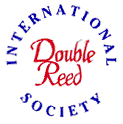
|
The Opus 68 Wind Quintets of Franz Danzi
|
Scores and Parts Created from the Early 19th-Century Sources
Charles-David Lehrer, General Editor
Franz Danzi: Quintet in F Major: Op. 68, No. 2
Flute, Oboe, Clarinet, Horn, and Bassoon
Franz Danzi (1763-1826) published this work, the second of his Trois Grands Quintettes Op. 68, with the House of André in Offenbach during the latter part of the year 1823 or early in 1824.
This edition of Franz Danzi’s Op. 68 is based upon a late 19th-century manuscript of the parts located in the Département de la musique of the Bibliothèque Nationale under the call number L.2561. The individual parts contain an additional number 1 through 5 depending upon the instrument. The flute and oboe parts are each dated August 1888 and are signed by the copyist K. Larles.
The question is: why was this manuscript made when the parts were readily available in published form? Perhaps by 1888 the Danzi quintets in question were out of print, although the House of André was still operating and in good financial health. Penciled-in rehearsal letters indicate that the parts were actually used. But by whom? It so happens that in the year 1879 Paul Taffanel (1844-1908) formed his famous group for the performance of music for wind ensembles, the Société des Instruments à Vent; and this series of works by Danzi might have been part of its repertory, at least repertory that members of the ensemble could read through. Laila Storch reports that few quintets were ever programmed by the Société; so, perhaps the copy was made for student use at the Paris Conservatoire.
The instruments are given French names on the frontispiece for each individual part: flûte, hautbois, clarinette, cor, and bassoon; but Italian pervades the actual parts insofar as tempo and dynamics are concerned. There is no score. Clarinet in A and horn crooked in E are specified for this work. Throughout Danzi's nine quintets, though, the clarinetist will need Bb and A clarinets, while the hand-horn player will use several crooks.
The Op. 68 Quintetti are set in the following keys:
No. 1: La majeur
No. 2: Fa majeur
No. 3: Ré mineur
Each of Danzi's quintets follows the same four-movement scheme as Antoine Reicha's famous 24 wind quintets: sonata form, slow movement, scherzo, finale. It is significant that Danzi, who worked at the court of the Grand Duke of Baden in his magnificent Schloss in Karlsruhe at the time, chose the Parisian publisher Maurice Schlesinger to present his first three quintets, the Op. 56, for it was in Paris that Reicha's superb quintet players were in residence at several of the most prominent theatres in town. Covering all bases, the same series was issued concurrently in Berlin, the capitol of Prussia, by the father of Maurice, Adolf Martin Schlesinger who was the founder of Chez Schlesinger. The House of André in Offenbach, equally as famous and chosen by Danzi for the publication of his Op . 67 and 68, was headed by Johann Anton André. It was under his leadership that Mozart's personal thematic catalogue, which he owned, was published in 1841.
First Movement
Initiating this quintet, a substantial sonata form gets underway. Within its body, one finds the attachment of a host of tonicizing closing themes to the two primary themes of both exposition and recapitulation, and the inclusion of an extensive development. Towards the end of the latter, Danzi introduces a third primary theme. In addition, the secondary theme of the recapitulation is, in reality, an entirely new theme. The composer is trying to trick the listener into thinking it is a recapitulation of the one heard in the exposition! Regarding the closing themes, the first two of the six are removed in the recapitulation and a new one is added to the end. The oboe part dominates much of this thematic material, and there is a goodly amount of high-range playing involved in performing it. This is a most-excellent movement.
Second Movement
The slow movement of this quintet is quite straightforward compared to the initial movement. A plaintive theme in rounded binary form, and set in the dominant, is sounded by the oboe. This then leads to a set of variations on the theme as follows:
Variation 1: flute: quadruplets
Variation 2: bassoon: triplets
Variation 3: ensemble minus flute: contrapuntal
Variation 4: horn: duplets: Minore
Variation 5: flute: quadruplets with cadenza (for oboe)
Coda
What is surprising is that there is no clarinet variation, but there are two for flute. The horn variation in the parallel minor is outstanding.
Third Movement
Both Menuet and its Trio are laid out in rounded binary form. The Trio is set in the subdominant as a solo for flute. This is a very pedestrian movement, quite old-fashioned for 1824 when it was published.
Fourth Movement
This finale is cast as a rondo-sonata form with three couplets surrounded by four soundings of the refrain. The flute never partakes in the refrain, which makes for an interesting texture there, particularly with its high horn solo. Despite the 18th-Century sound of this movement, it is truly delightful.
About This Site
Site Developed by Nancy Bonar Lehrer
© International Double Reed Society: Boulder, Colorado, USA - 2002
If you are having difficulties using this site, see About This Site .

Home

